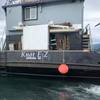Bulk Market Pauses
For a shipbuilder’s point of view, there is no need to book new contracts for the second half of 2007 and 2008 delivery. Uncertainty over steel prices would likely mean that such deals would have to carry significant premiums that could well put off many would-be contractors. However, some brokers believe that major shipyard groups may be hiding a few slots for earlier dates. These could be booked, they say, but at substantially inflated prices. Other yards are believed to be holding off filling berth space completely, in case highly lucrative LNG deals emerge which, of course, yield more than more standard ship types.
According to some reports, however, there are signs that Chinese steel prices may at last be easing). According to a recent report from Marsoft, Chinese steel production rose by “an astonishing 31% annual pace in February [while] Chinese iron ore imports also went through the roof, totaling 18.7 m tons. This is far and away the highest monthly import total ever recorded by a single country”, Marsoft says, “and equates to an annualized pace of 224 m tons.” Any easing in steel costs that may result from higher Chinese production, however, will take some time to filter through and, in any case, steel buyers are unlikely to have forgotten significant losses which many incurred when steel prices started to spiral so rapidly. Builders and repairers are unlikely to fall over themselves to reduce steel prices, if raw steel costs do start falling.
Meanwhile this week has seen the latest spat in the increasingly belligerent arguments over whether double hulls are a sensible development for bulk carriers of more than 150 m built after 2007. As we went to press, discussions were under way at IMO’s Maritime Safety Committee in London, with the Greeks on one hand adopting an anti- approach and accusing some studies into the issue of not taking into account recent measures adopted by unified requirements by class to make bulk carriers safer.
Certainly some class society sources, who will not go on the record, now believe that the whole issue has become deeply politicised to the point where the opinions of ship designers and any conclusions drawn by Formal Safety Assessments have almost no bearing. If the world’s public believes that two hulls are safer than one – as might appear to make sense to Joe Bloggs – maritime authorities have to take that into account, one source said wryly.













